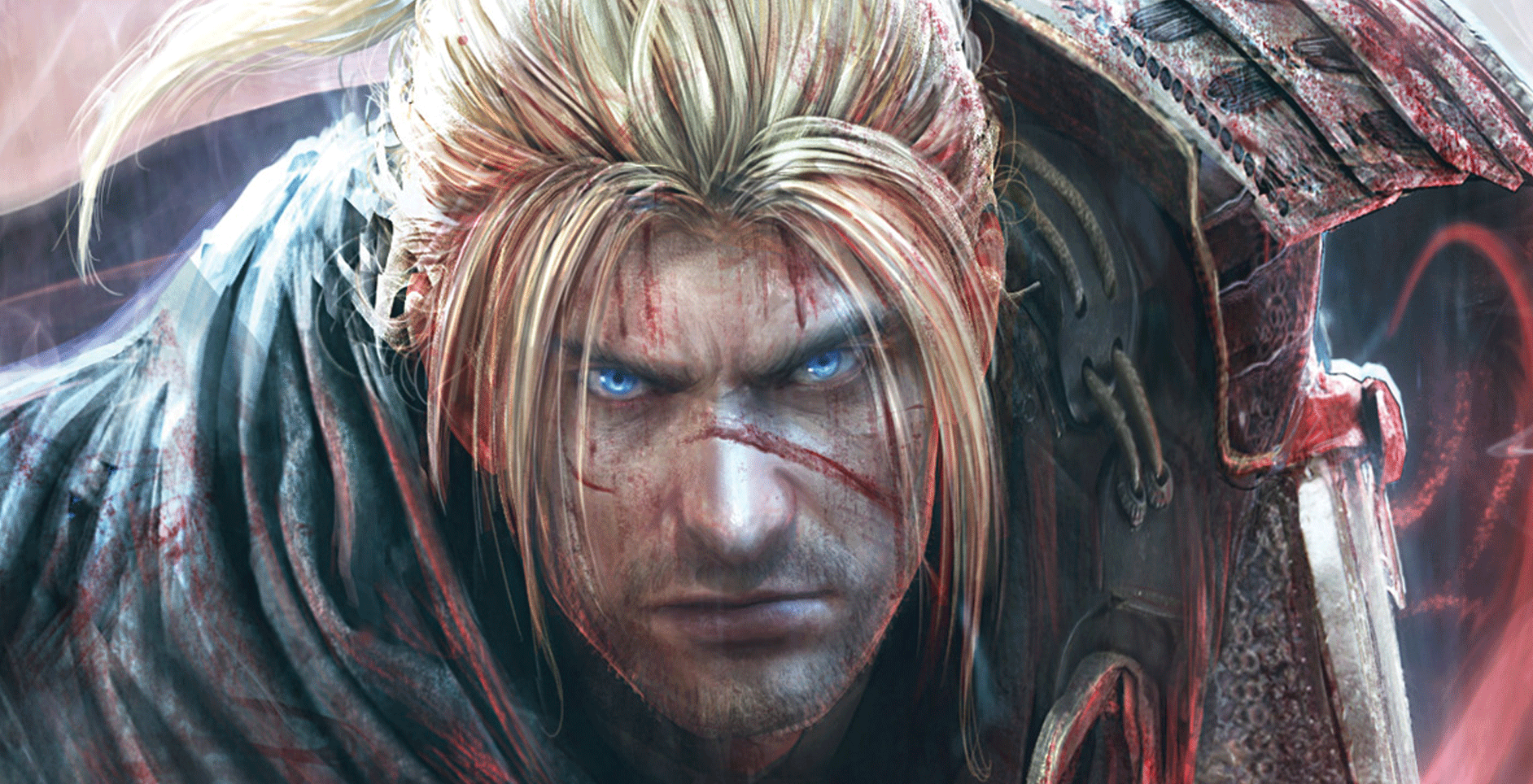Nioh is an interesting game. At first glance many would happily write it off as a clone of Dark Souls, albeit with a distinctly Japanese flavour. But upon spending hours upon hours with Nioh, it’s clear that there’s more that meets the eye here. The truth of the matter is that Nioh is a game that is influenced by games in the genre, like Dark Souls, but very much carves out its own identity for itself. Even if it does happen to contain the DNA of its contemporaries and pedigrees from its developer. If you ever enjoyed games like Capcom’s Onimusha, Dark Souls, Bloodborne or even Team Ninja’s very own Ninja Gaiden, you’re bound to find something in Nioh that’ll appeal to you.
Nioh takes place during the Sengoku era, a time in Japan where the states were warring while others fought to bring them together. You play as William Adams, an irish samurai who encounters a strange alchemist who has the intention to assassinate the emperor. With all the intention to stop him, William travels to Japan and embarks on a journey filled with the supernatural and the unexpected. Like games like Onimusha, or more superficially, Assassin’s Creed; Nioh takes historically accurate locales, conflicts and people and weaves them into a storyline riddled with the supernatural and outlandish. The result is something slightly compelling for anyone versed in this period of history but otherwise just pedestrian for everyone else.
Like games like Onimusha, or more superficially, Assassin’s Creed; Nioh takes historically accurate locales, conflicts and people and weaves them into a storyline riddled with the supernatural and outlandish. The result is something slightly compelling for anyone versed in this period of history but otherwise just pedestrian for everyone else.
As I mentioned earlier, Nioh looks to be a Dark Souls clone. It isn’t, but the way the game is designed is quite evocative. William is the only playable character, and you’ll play through enclosed environments fighting all kinds of enemies before taking on a (usually) overwhelming boss. While the missions themselves are self-contained and usually contain multiple paths for William to approach his goal from, they are all selected from a map. There’s no interconnectedness to the environments, no open world. But this makes Nioh feel a lot more approachable with less filler (to a point). The crux of the Nioh experience is the combat, and this is where Nioh really comes into its own. William can wield up to five different kinds of weapons from swords to axes to the less orthodox kusarigama. Each of these weapons can be wielded in a low, mid or high stance which not only alters the way the weapon behaves in combat but also how William can move and carry himself in battle.
The crux of the Nioh experience is the combat, and this is where Nioh really comes into its own. William can wield up to five different kinds of weapons from swords to axes to the less orthodox kusarigama. Each of these weapons can be wielded in a low, mid or high stance which not only alters the way the weapon behaves in combat but also how William can move and carry himself in battle.
Stances affect how quickly William attacks, how quickly he recovers from attacks and how effectively he blocks and evades. Such a battle system is cardinal in why Nioh is much more approachable than other games – you fight the way you want to fight, and have so many options at your disposal if you want to change your approach. Some approaches will work better than others, but having so many different tools at your disposal is so comforting in a genre that’s generally known for being quite challenging. Which is why Nioh is so peerless. It still offers a challenge that players of action games are more than likely accustomed to but it feels fair in the way that it doles out its punishment. You will take damage and you will take a lot of it if you are too lazy with your evading or blocking. But it’ll feel fair. It will be understandable. There’s no purposefully imposed jank to increase the difficulty and intricacy of the battles. Combat is a rewarding and smooth experience in Nioh and is why it’s such an enjoyable experience.
Which is why Nioh is so peerless. It still offers a challenge that players of action games are more than likely accustomed to but it feels fair in the way that it doles out its punishment. You will take damage and you will take a lot of it if you are too lazy with your evading or blocking. But it’ll feel fair. It will be understandable. There’s no purposefully imposed jank to increase the difficulty and intricacy of the battles. Combat is a rewarding and smooth experience in Nioh and is why it’s such an enjoyable experience.
You’ll need to really be attuned to the combat and the nuances of Nioh because the game has a veritable smorgasbord of bosses (over 30) to throw at players. Yes, the enemies are great to fight too (if not slightly samey at times) but the boss battles are really where Nioh shines. Initially I was just stumbling through them, abusing items to get by. But as you learn and play Nioh more and more, you’ll be able to take them down easily without using a single item. And there’s a great variety too – single humanoid bosses, gigantic Dark Souls-esque creatures and everything in between. There’s even a giant, pipe-smoking, talking toad who fights with a spear. It’s a bit kooky but it works honestly.
But as you learn and play Nioh more and more, you’ll be able to take them down easily without using a single item. And there’s a great variety too – single humanoid bosses, gigantic Dark Souls-esque creatures and everything in between. There’s even a giant, pipe-smoking, talking toad who fights with a spear. It’s a bit kooky but it works honestly.
While the weapons are as comprehensive as ever, Nioh also provides plenty of other tools for players to experiment with. Using certain weapons constantly will earn proficiency points which can unlock new skills and abilities for William. Similarly, ninja and magic skills can also be learnt to help buff weapons, debuff enemies and provide viable stealth options for players so inclined too. When you’re not taking on the bosses in the main missions you’ll be navigating the map screen through the different missions on offer. For those who want to hone their craft, Nioh offers the opportunity to step through levels you’ve already revisited, albeit remixed, in “side missions”. For those who want a real challenge, there’s twilight missions as well. Completing these all offer something to the player and despite reusing locales from time to time, still feels like meaningful content and never really a “grind”.
When you’re not taking on the bosses in the main missions you’ll be navigating the map screen through the different missions on offer. For those who want to hone their craft, Nioh offers the opportunity to step through levels you’ve already revisited, albeit remixed, in “side missions”. For those who want a real challenge, there’s twilight missions as well. Completing these all offer something to the player and despite reusing locales from time to time, still feels like meaningful content and never really a “grind”.
Which is a great relief as Nioh is a large game and one that you won’t get bored of quickly. With over twenty bosses to conquer in over thirty encounters across multiple levels both primary and secondary, the whole game will easily last players at least thirty or so hours. Perhaps even more if you plan to conquer and take on all the game’s twilight missions (which I embarrassingly concede I was unable to). Playing the game through a second time in the “Way of the Strong” offers even more of a challenge, and a new class of weapons to be unlocked. Nioh offers lots of engaging content at a reasonable price. For those who are completely struggling, it’s also possible to take on missions with a friend. In a manner that is ostensibly stronger than Dark Souls, you can summon another player’s character to play through mission with you at any shrine (the equivalent of the save point / bonfire in the Souls games). It’s such a simple way to do things and one that can be especially rewarding when trying to overcome that difficulty spike that might’ve halted your progress.
For those who are completely struggling, it’s also possible to take on missions with a friend. In a manner that is ostensibly stronger than Dark Souls, you can summon another player’s character to play through mission with you at any shrine (the equivalent of the save point / bonfire in the Souls games). It’s such a simple way to do things and one that can be especially rewarding when trying to overcome that difficulty spike that might’ve halted your progress.
From an artistic standpoint, Nioh is a pretty stunning looking game but also respects other players choices. Those who value a smoother (60fps) framerate can choose to have it using the game’s “Action Mode”. On the other hand, greater resolution at a less stable framerate is also available in “Movie Mode”. While these options are great, I played on a Pro and found little difference between the two – though the game is spectacular looking either way. Rainy villages, sunken gardens and brightly lit crystal mines are just some examples of some locales in Nioh that look stunning. To have such a visually dense game run at such a stable framerate is a technical achievement.
CONCLUSION
While it’s easy to sit back and write Nioh off as another Dark Souls clone, it’s something very different. Yes, it’s slightly less challenging to get into, but it’s a result of some incredibly synergistic systems that work so well together to improve and smooth the player experience. Nioh is still a difficult game, mind you, but it’s an experience that consistently rewards players for performing well.
This is the difference between it and other games – and why it’s so hard to put down, even after losing. Nioh is a game that goes all out to get your attention – and that’s why it deserves it.



